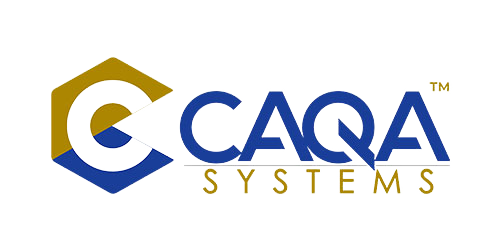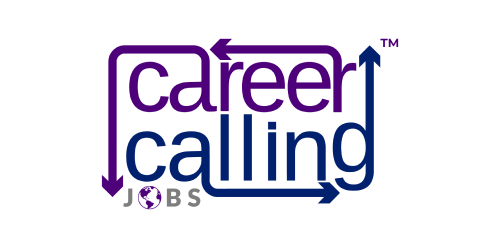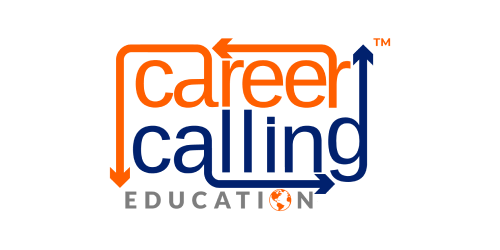The apprenticeship model has endured for centuries as one of humanity's most effective systems for transmitting specialised skills from one generation to the next. From medieval guilds to modern trade unions, the core principle has remained remarkably consistent: novices learn by working alongside masters, gradually assuming greater responsibility as they develop proficiency. This time-tested approach has weathered countless technological revolutions, adapting to accommodate steam power, electricity, internal combustion, and computerisation. Now, artificial intelligence presents perhaps the most profound challenge yet to this venerable model. As AI systems increasingly perform tasks once requiring human expertise, legitimate questions arise about the future viability of traditional work-based learning. Yet across diverse industries and regions, innovative vocational education providers are discovering that AI need not spell the end of apprenticeship but rather offers unprecedented opportunities to reimagine and enhance this enduring educational approach for a digital age.
This reimagining begins with recognition that AI does not simply automate existing tasks but fundamentally transforms the nature of work itself across virtually every domain. The electrical apprentice of 2025 must understand not only traditional wiring methods but also how to install, configure, and troubleshoot smart building systems powered by machine learning algorithms. The culinary trainee requires proficiency not just in knife skills and flavor combinations but also in operating computer vision systems that monitor food safety and optimise inventory. The healthcare aide needs competency in both patient interaction and interpretation of AI-generated wellness recommendations. These evolving skill requirements demand corresponding evolution in how work-based learning is structured, delivered, and assessed. Leading vocational institutions and industry partners worldwide are pioneering approaches that maintain apprenticeships' core strengths—authentic workplace learning, expert mentorship, progressive skill development—while leveraging AI to enhance these elements rather than replace them.
Among the most promising developments is the emergence of "augmented apprenticeship" models that use AI to create a seamless bridge between classroom theory and workplace application. Traditional apprenticeships often struggle with this theory-practice divide; classroom instruction may seem disconnected from workplace realities, while on-the-job experiences may lack structured reflection or theoretical context. New approaches address this challenge through AI-powered tools that accompany apprentices throughout their learning journey. At Rotterdam's Maritime Technical Institute, for instance, shipbuilding apprentices use augmented reality headsets equipped with computer vision while working on actual vessels. The system identifies components, overlays relevant technical specifications, suggests appropriate procedures, and even connects apprentices with remote experts who can provide real-time guidance on complex tasks. "The technology doesn't replace either classroom learning or hands-on experience," explains the program director. "Instead, it creates connections between them, helping apprentices apply theoretical knowledge in practical contexts while simultaneously developing a deeper understanding of underlying principles through authentic application."
Similar implementations across diverse vocational fields demonstrate the potential of augmented apprenticeship to enhance learning effectiveness. Construction apprentices in British Columbia use AI-enabled mobile applications that recognise building components, verify code compliance, and provide contextual information about materials and methods. Automotive technicians in training at Bavaria's Vocational Academies employ diagnostic tools that not only identify vehicle issues but also explain the reasoning behind recommendations, helping apprentices develop their own diagnostic thinking. Healthcare trainees at Singapore Polytechnic utilise natural language processing systems that provide real-time guidance during patient interactions, offering suggested responses while analysing communication patterns to provide personalised coaching on interpersonal skills. These applications share a common approach: they provide scaffolding that helps novices perform at higher levels than would be possible unassisted, while gradually reducing support as competence develops—a technological implementation of the "fading" that characterises effective traditional apprenticeship.
Beyond enhancing the learning process itself, AI enables new approaches to apprenticeship assessment that better align with workplace realities. Traditional evaluation often relies heavily on artificial demonstrations or written examinations that inadequately capture real-world competence. Modern approaches leverage AI's observational capabilities to assess performance in authentic contexts. At Australia's National Electrical Apprenticeship Program, computer vision systems monitor apprentices performing actual installation tasks, analysing their technique, safety practices, and finished work quality according to industry standards. The system provides immediate, specific feedback rather than delayed, general assessments typical of traditional approaches. Similarly, culinary apprentices at France's Institut Paul Bocuse receive continuous evaluation of their cooking techniques through kitchen workstations equipped with sensors and cameras that assess everything from knife angle to temperature control. These assessment approaches maintain human judgment where it matters most—master chefs still evaluate flavor and presentation, while electrical supervisors still verify code compliance—but enhance objectivity and feedback frequency for technical elements that benefit from continuous monitoring.
Perhaps most significantly, AI enables unprecedented personalisation of work-based learning pathways. Traditional apprenticeships often follow standardised progressions based on time rather than mastery, potentially holding back quick learners while rushing those who need additional practice. Data-driven approaches now allow for dynamic, competency-based progressions tailored to individual strengths, challenges, and career objectives. Denmark's Technical Education Centers employ learning analytics platforms that continuously monitor apprentice performance across both technical tasks and essential workplace skills, identifying specific areas where additional practice or instruction might benefit each individual. The system suggests personalised learning activities aligned with identified needs and helps workplace supervisors assign tasks optimally matched to current competence levels, challenging enough to promote growth without overwhelming the learner. "We're moving from time-based to truly competency-based apprenticeship," explains their director of work-based learning. "Each apprentice follows a unique pathway based on their demonstrated capabilities rather than arbitrary timeframes, allowing some to progress more quickly while providing others the additional support they need to achieve mastery."
These innovations position apprenticeship not as an antiquated model threatened by technological advancement but rather as an increasingly valuable approach amid rapid workplace transformation. As automated systems assume more routine tasks, human work increasingly centers on complex problem-solving, creative thinking, ethical judgment, and interpersonal interaction—precisely the capabilities best developed through guided, authentic practice rather than abstract instruction alone. Swedish telecommunications giant Ericsson has embraced this reality by radically reimagining its technical apprenticeship program. Rather than training technicians solely in current installation procedures likely to be automated, they focus on developing adaptive problem-solving in complex scenarios where AI tools may provide information, but human judgment remains essential. Apprentices regularly confront novel challenges designed specifically to transcend current algorithmic capabilities, working alongside experienced mentors who model metacognitive strategies rather than simply demonstrating fixed procedures. "We're preparing apprentices not to compete with AI but to leverage it effectively in situations that require human creativity and judgment," explains their workforce development director. "The technical specifics they learn today may be obsolete in five years, but the adaptive expertise they develop through solving novel problems alongside experienced practitioners will serve them throughout their careers."
This evolution extends beyond technical trades to emerging fields directly centered on AI implementation and support. As AI deployment accelerates across sectors, a growing demand has emerged for specialists who can implement, customise, monitor, and maintain these systems in specific vocational contexts. These roles typically require less theoretical depth than AI research or development positions but more practical application knowledge than general users, precisely the profile that advanced apprenticeship models excel at developing. In response, Germany's Chambers of Industry and Commerce have established formal apprenticeship pathways for "AI Implementation Specialists" who complete combined classroom instruction and workplace learning focused on deploying and supporting AI systems in specific industry contexts. Unlike computer science graduates who might design algorithms from scratch, these apprentices specialise in adapting existing systems to particular industry applications, training models on domain-specific data, and troubleshooting implementations in practical settings. "These roles represent a perfect application of the dual training approach that has long distinguished German vocational education," notes the program coordinator. "The technical foundations are taught systematically in classroom settings, while the contextual knowledge and practical application skills develop through structured workplace experiences under expert guidance."
Small and medium enterprises (SMEs) particularly benefit from such apprenticeship pathways as they often lack resources to employ highly specialised AI researchers but increasingly need staff with practical AI implementation capabilities. In northern Italy's manufacturing region, a consortium of SMEs has partnered with regional technical institutes to create shared apprenticeship programs focused on practical AI applications in industrial settings. Apprentices divide their time between classroom instruction at the technical institutes and rotational placements across multiple SMEs, gaining exposure to diverse implementation contexts while providing immediately valuable contributions to host companies. "The arrangement benefits everyone involved," explains the consortium director. "Companies gain access to talent equipped with current technical knowledge at manageable cost, educational institutions maintain close connection to workplace requirements, and apprentices develop versatile skills across multiple environments rather than becoming narrowly specialised within a single company's approach. Most importantly, the regional economy develops capacity for broader AI adoption that might otherwise concentrate solely in larger enterprises."
Informal apprenticeship practices common in developing economies are similarly evolving to incorporate AI elements, often through innovative approaches that bypass infrastructure limitations. In rural India, for instance, traditional craft apprenticeships now incorporate smartphone-based AI applications that connect artisans with broader markets, provide design suggestions based on current trends, and offer tutorials for techniques beyond the master craftsperson's repertoire. In Kenya's rapidly growing technology sector, informal apprenticeship networks use AI-powered skill verification platforms to document competencies developed through practical experience rather than formal credentials, helping self-taught technicians demonstrate capabilities to potential employers or clients. These implementations demonstrate how AI can enhance apprenticeships' accessibility and effectiveness even in resource-constrained environments, potentially expanding rather than limiting economic opportunity when thoughtfully deployed.
Indigenous communities have found particular value in AI-enhanced apprenticeship models that support cultural knowledge transmission alongside technical skill development. In northern Canada, for example, Inuit communities have developed digital platforms that use natural language processing to record and organise traditional ecological knowledge shared by elders with younger apprentices during land-based learning experiences. The system creates searchable archives preserving insights about animal migration patterns, weather prediction, sustainable harvesting practices, and other knowledge traditionally transmitted through apprenticeship relationships. "The technology doesn't replace the essential human relationship between elder and learner," emphasises the program coordinator. "Rather, it extends and preserves these connections, allowing younger community members to continue accessing guidance even when physical presence isn't possible and ensuring knowledge persists for future generations. What's remarkable is how the oldest educational method—learning through guided participation in authentic activities—finds new vitality through the newest technologies when we approach implementation thoughtfully."
For vocational education providers considering the implementation of AI-enhanced apprenticeship models, several critical success factors emerge from early adopters' experiences. First, effective implementations maintain clear focus on augmenting rather than replacing the human relationships at the apprenticeship's core. Technology enhances communication between apprentices and mentors, provides supporting information and guidance, and handles routine elements that might otherwise consume attention, but it does not substitute for the essential human guidance, modeling, and coaching that drive deep learning. Second, successful programs involve workplace supervisors and experienced practitioners throughout the design process rather than imposing technologically sophisticated but practically disconnected solutions. When Danish construction companies helped develop the AI systems now supporting their apprentices, they ensured the technology addressed actual workplace challenges rather than hypothetical problems. Third, the most effective implementations recognise that different aspects of vocational competence may benefit from different applications of technology, using AI selectively rather than comprehensively. Technical fundamentals might benefit from adaptive tutorials and simulation, while complex problem-solving might best develop through human mentoring supported by information augmentation tools.
Accessibility considerations warrant particular attention as AI-enhanced apprenticeship models evolve. While these approaches offer unprecedented potential to support diverse learners, they also risk exacerbating existing inequities if implemented without careful consideration of access barriers. Leading programs address these concerns through approaches like Manitoba's Remote Apprenticeship Program, which provides specialised equipment kits to rural apprentices, ensuring they can participate fully in augmented learning activities despite geographical isolation. Similarly, Singapore's inclusive apprenticeship initiative has developed adaptive interfaces for their augmented reality training systems, accommodating diverse physical and cognitive capabilities to ensure all apprentices benefit from technological enhancements rather than facing additional barriers. These examples demonstrate how thoughtful implementation can make AI-enhanced apprenticeships more rather than less accessible, potentially extending this powerful learning model to populations historically excluded from traditional programs.
Looking toward the future, several emerging developments promise to further enhance apprenticeships' effectiveness in an AI-infused economy. Advanced simulation environments increasingly enable apprentices to practice high-risk or rare scenarios that might be encountered only occasionally in actual workplaces, accelerating expertise development through deliberate practice. Virtual collaboration platforms allow apprentices to engage with geographically distributed communities of practice, transcending limitations of local placement opportunities. Comprehensive learning record systems that document both formal qualifications and demonstrated competencies enable more fluid progression between education and employment, supporting the continuous learning increasingly essential in rapidly evolving fields. Perhaps most importantly, AI systems themselves are becoming more transparent and explainable, allowing apprentices to understand not just what these tools recommend but why—essential knowledge for developing the critical judgment needed to effectively oversee AI-assisted processes.
For vocational education providers navigating this evolving landscape, the path forward requires balancing innovation with apprenticeship's enduring core principles. The most successful implementations maintain unwavering focus on developing human capabilities that complement rather than compete with AI systems: complex problem-solving in unpredictable environments, ethical judgment in ambiguous situations, creative approaches to novel challenges, and effective collaboration across human-machine boundaries. They recognise that while specific technical skills may rapidly evolve or become automated, the fundamental strengths developed through guided participation in authentic work—adaptive expertise, situational awareness, professional identity, and practical wisdom—remain invaluable across technological transitions. By thoughtfully integrating AI capabilities while preserving these essential human elements, vocational education providers can ensure apprenticeship not only survives but thrives amid unprecedented technological transformation.
As one master electrician with forty years' experience supervising apprentices observed after his company implemented AI-enhanced training tools: "The technology doesn't change what matters most—helping novices develop the judgment to know what to do when the situation doesn't match the manual. What's changed is that we can now focus almost entirely on developing that judgment because the tools handle so much of the routine knowledge transfer that used to consume our time. I'm having deeper conversations with apprentices about why we make certain decisions in complex situations, rather than spending hours explaining basic procedures they can now learn through the interactive system. The fundamentals of good apprenticeship haven't changed—it's still about guided participation in real work under expert mentorship. The tools just help us focus the guidance where human expertise matters most." This perspective captures the essential promise of AI-enhanced apprenticeship: not replacing the time-tested model that has effectively developed vocational expertise for centuries, but rather amplifying its unique strengths while addressing historical limitations. Through thoughtful integration of these powerful technologies, apprenticeship seems poised not just to survive the AI revolution but to emerge as an increasingly valuable approach for developing the distinctively human capabilities that will define successful vocational practice in the digital age.


































